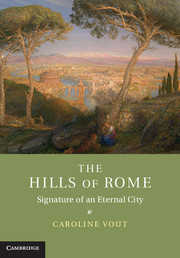Description
The Hills of Rome
Signature of an Eternal City
Author: Vout Caroline
This book explores the cliché of 'the city of seven hills' and how, since antiquity, it has shaped experience of the city.
Language: English
Subject for The Hills of Rome:
Approximative price 71.35 €
In Print (Delivery period: 14 days).
Add to cart
The Hills of Rome
Publication date: 09-2012
Support: Print on demand
Publication date: 09-2012
Support: Print on demand
Approximative price 31.58 €
In Print (Delivery period: 14 days).
Add to cart
The Hills of Rome
Publication date: 09-2016
Support: Print on demand
Publication date: 09-2016
Support: Print on demand
Description
/li>Contents
/li>Biography
/li>
Rome is 'the city of seven hills'. This book examines the need for the 'seven hills' cliché, its origins, development, impact and borrowing. It explores how the cliché relates to Rome's real volcanic terrain and how it is fundamental to how we define this. Its chronological remit is capacious: Varro, Virgil and Claudian at one end, on, through the work of Renaissance antiquarians, to embrace frescoes and nineteenth-century engravings. These artists and authors celebrated the hills and the views from these hills, in an attempt to capture Rome holistically. By studying their efforts, this book confronts the problems of encapsulating Rome and 'cityness' more broadly and indeed the artificiality of any representation, whether a painting, poem or map. In this sense, it is not a history of the city at any one moment in time, but a history of how the city has been, and has to be, perceived.
1. Introduction: the journey to Rome; 2. The lie of the land; 3. Seven is the magic number; 4. Rome, la città eterna; 5. Painting by numbers; 6. On top of the world; 7. Signing off.
Caroline Vout is Senior Lecturer in Classics at the University of Cambridge and a Fellow of Christ's College and the Society of Antiquaries of London. She is a historian and art historian who publishes on a wide range of topics related to Greek and Roman art and its reception, Latin literature and Roman history and is the author of Power and Eroticism in Imperial Rome (Cambridge, 2007). In 2009 she was awarded a Philip Leverhulme Prize for her work on art history and in 2010 was the Hugh Last Fellow at the British School at Rome.
© 2024 LAVOISIER S.A.S.




